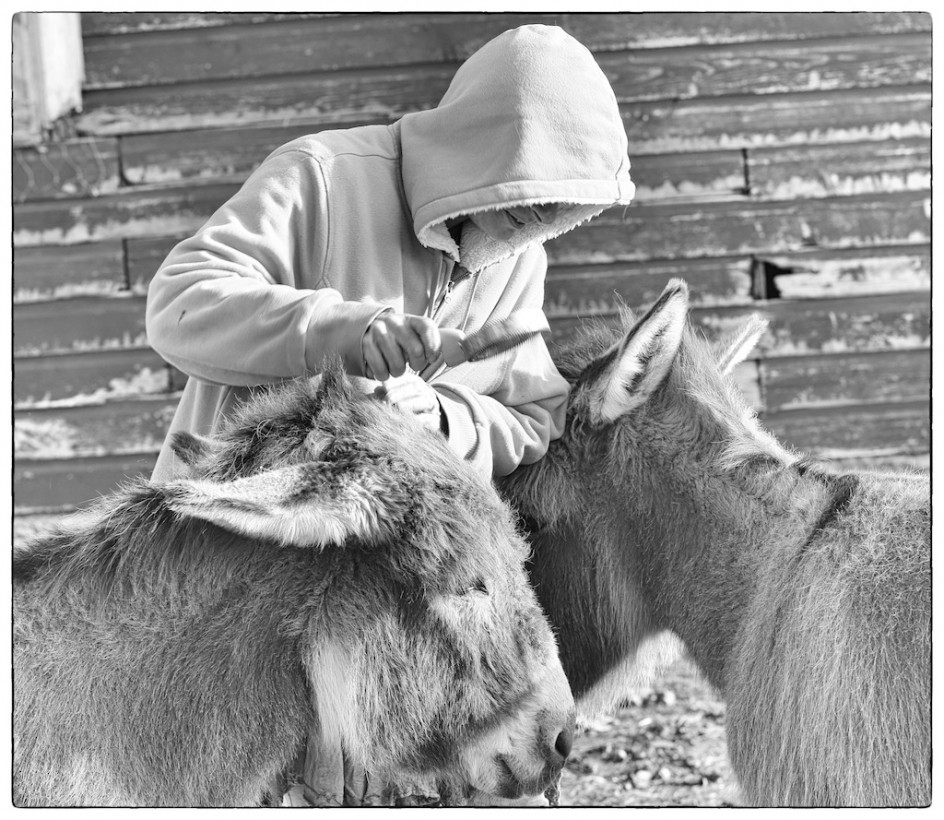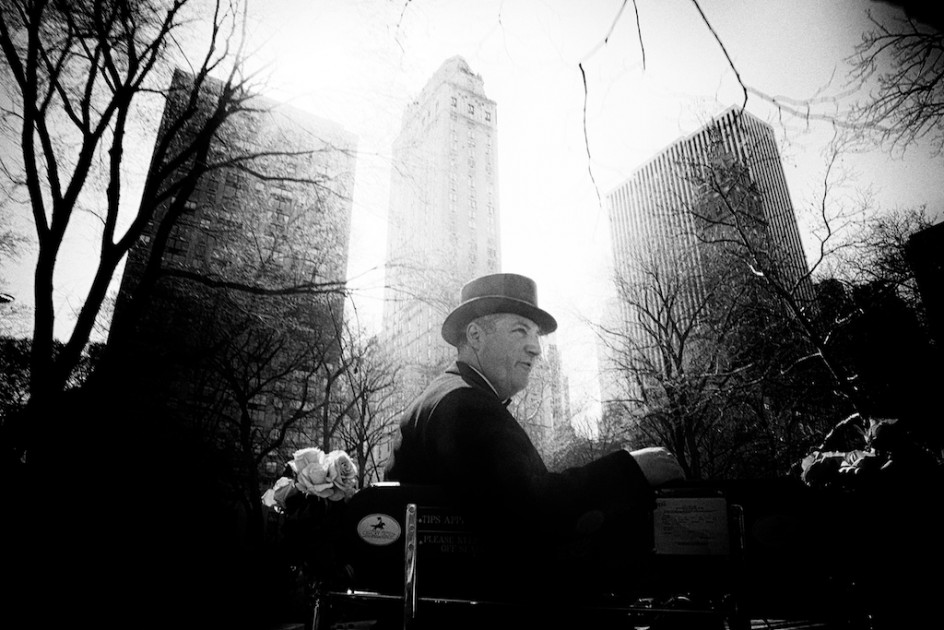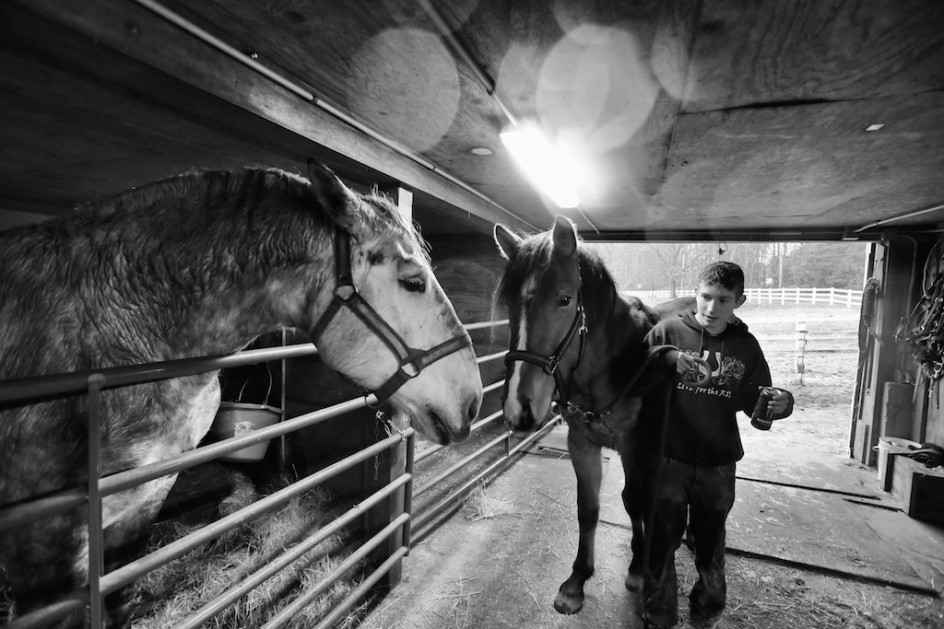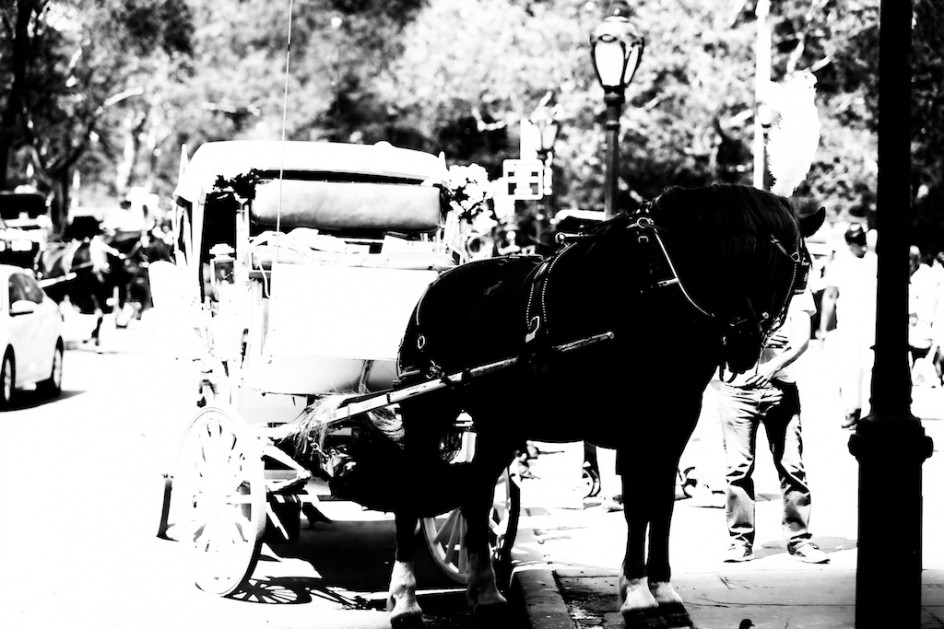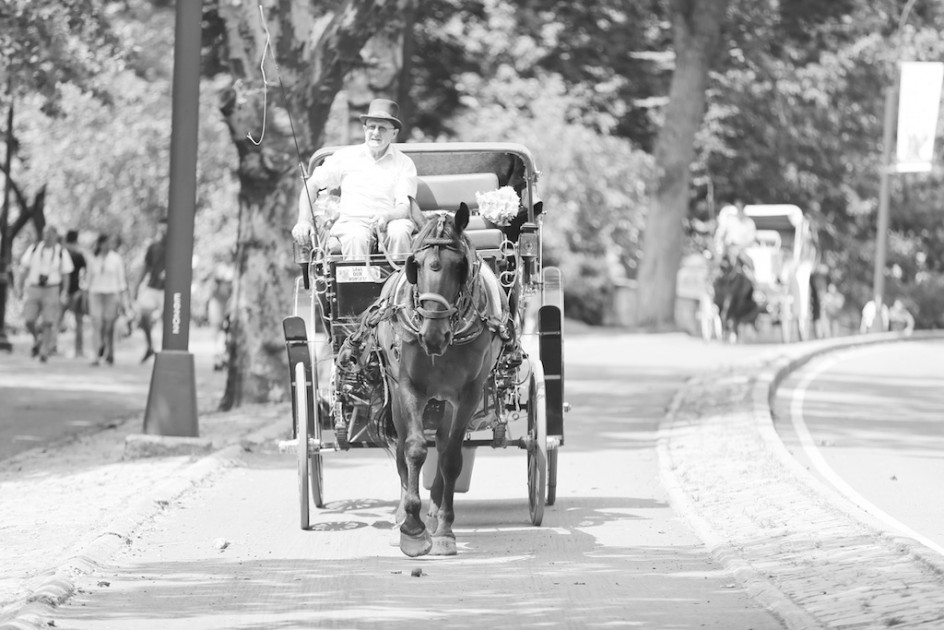
For me, two moments stood out quite powerfully during the long and sometimes racuous hearings in the New York City Council Friday on the mayor’s latest proposal to gut the New York Carriage Trade. This round features a bill that would move the horse trade into Central Park somewhere, someplace, some time in the future, at taxpayer expense, and despite overwhelming opposition, all to be decided later.
I should make it clear that no one close to city government or the history of parks and projects believe a stable will ever be built or renovated in time to save the carriage trade, if ever.
Late in the morning Friday, a City Council member asked the team of mayoral aides assembled at a long table what the purpose of moving the horses into the park was, and a deputy mayor responded quickly that the legislation was only about the health and safety of the horses. It was so they could escape the dangerous streets of New York.
If that were so, asked the councilman, how many horses had been killed in those streets since the mayor’s office was keeping track?
I could see this was a set-up, the councilman looked like a fox zeroing in on a chicken. Readers of my blog, you know the answer to this, but the jammed hearing room in New York was on the edge of their seats.
“None,” said the mayoral aide.
Not one horse in at least the past decade.
And the councilman asked again, just to be sure, and perhaps for affect. He was savoring the moment.
And the answer was the same: Not one.
And you could hear the gasps in the room, and the jaws of the council members drop. And the animal rights people, hooting and hollering all morning, were quiet.
None? (Actually, three horses have been killed in the past 30 years in traffic accidents in New York City out of roughly three million rides, but the mayor’s office didn’t seem to know that.)
And so, asked the councilman, how many horses have been injured in recent memory?
Four horses in modern history have been in traffic accidents, the mayor’s aide mumbled – the room was very quiet – and more council members shook their heads. And the horse people beamed. The audience gasped again and murmured. “Well,” said a council member, “that’s too many, but really, not many, given the number of rides.”
And this, several council members asked, is why the horses must be moved out of their stables and to the park at a taxpayer cost of 25 million dollars, while 55,000 New Yorkers remain homeless?
Because no horses were killed and a tiny fraction injured in one of the busiest and most crowded cities in the world? I wish people had a safety record like that, said one councilwoman.
It was a Perry Mason moment, the only truly unforgettable moment of the day, the one that defined this controversy that isn’t.
It tells you about all you need to know about the carriage horse drama, except this:
How many drivers, asked a council man have been arrested for abusing a horse?
Much whispering and conferring at the mayor’s table, then the answer. One, and the case is pending.
“One?” asked the councilman, hardly believing his ears. “In 150 years?” The mayor’s aide cleared his throat, and you could barely hear his response. “Yes, one, and the case is pending.”
The scene was surreal, the air seem to go right out of the balloon, the mayor’s gnomes sagged in their seats. Some of the council members even left the room, went to lunch, headed for the bathroom. I used to live and work in New York as a journalist, and I can tell you these people deal all the time with some of the toughest, most insoluble and controversial urban issues on the earth – real problems. They all seemed to be wondering, almost out loud, why they were dealing with this? Why were they wasting so much time on the crisis that isn’t?
They were trapped. The mayor had a big debt to pay, and he was twisting their arms to pay it. Once city council member talks to me fairly regularly. “They did an awful job of presenting it,” he said, “but don’t be fooled into thinking that matters. This was a show for the cameras.”
No matter how the hearings looked, or what the council members think, the mayor says he will pursue his proposal to cannibalize and diminish the carriage trade and reduce it to a narrow tourist concession in the middle of the park, preserved but forever cut off from the life and soul of the city and its people. The carriage trade will be dependent on the largesse of the city government and this mayor for it’s very existence and the maintenance of a new and radically less glamorous home.
The mayor is a powerful force in New York government, the city council is weak and dependent on the mayor for power.
If he really wants the bill to pass, it will pass, no matter how foolish or arrogant he looks or how illegitimate it seems. He has made it clear – some of the negotiators believe that he is not sane – that he will pursue the carriage trade by any means at all costs. He might delay his bill, or change it a bit, or even negotiate some things if he has to, but the odds are he will get it through. He is banking on the fact that if the horses are allowed to remain the park, most of the city will forget how and why they got there. And not really care. A good bet, I think, given the history of animal survival in America.
Americans are so disconnected from the natural and animal worlds they no longer even remember when we lived so closely with them and so easily.
And then there is the Teamsters Union, which represents the drivers, wants this to happen. Their position is simple: a stable in the park is better than no stable at all, some jobs saved are better than no jobs saved. The horses are not really their problem.
The second moment that struck me was the testimony of the young and eager yuppies of NYClass, (we love animals and hate people) the animal rights group that has pursued the horse ban for so long and at such a great cost. Seeing them on TV, they did look so righteous you wanted to smack them a bit, they forgot to not look smug. Mostly, they were ignored. They looked a little twerpy.
One of the members of the animal rights panel breathlessly recounted NYClass and PETA’s much-publicized and horrific story from last summer in which a bus is said to have grazed a horse, terrified him and caused his carriage to flip over, after which callous carriage drivers laughed and joked about their money, forced him to lie on the ground for a long period and suffer so they could preserve the harness and make him get back to work.
Another insisted the horses were kept in stables which are filthy, and where they can neither lie down or turn around. This is not true, according to my own eyes and to busloads of veterinarians and trainers, but no matter.
This is all by now a well-worm chapter from the spectacularly successful NYClass media playbook, in which the carriage drivers become the new Jews of Hitler’s Europe, greedy, soulless, unscrupulous, conniving, capable of any deprivation, less than human. None of them – not one – are good and worthy people, none of them actually loves a horse or cares for it well. There is no reason to even speak to them, they are not members of the moral community.
I spent a good day tracking down this story (carriage horses, raining on the just and the unjust) after the mayor cited it as a reason to ban the horses from city streets. PETA claimed a lawyer from Oklahoma witnessed the incident and saw the bus and saw the laughing, jeering drivers force the suffering horse – his name was Spartacus – get up and go to work as soon as they got him on his feet.
I called the Metropolitan Transit Authority and the NYPD and both agencies told me there was no bus anywhere near the carriage horses at that time, no incident was reported to them, and they emphatically said there was no incident involving any bus and a horse. They would have known.
I witnessed a number of videos taken by tourists at the scene – some were readers of my blog – and they said they saw no bus. One horse pulled out of the line, its wheels got tangled with the wheels of the carriage behind it, and Spartacus was pulled down to the ground.
The drivers reacted calmly and professionally and untangled the harness from the horse so he wouldn’t struggle or panic and get hurt, as is common practice with fallen horses who are in harness. Then he got to his feet – the incident lasted about two minutes from beginning to end. Spartacus was taken back to the stables, examined by a police vet, declared healthy and able to return to work, he was given a week on a New Jersey farm to get over it all.
Spartacus, whose owner is known to love his horses almost to the extreme, was never returned to work right after the incident. This “witness” was never identified, no reporter ever spoke to her, there is no evidence she ever existed as described, she has never spoken out in public about what she said she saw, only privately to PETA whose history of telling lies is as rich as its bank account.
None of the hundreds of witnesses corroborated her story in any way.
The “witness” didn’t seem to know in the PETA account that the driver spoke little English, and couldn’t have said the brutish things attributed to him, or that one of the other drivers helping out was a woman with long hair, not one of three men. No reporter, then or now, questioned her story or the NYClass account of the incident, it would take any reporter about three minutes to see through it.
No person or animal was hurt, there was no bus, the horse was not forced back to work. I asked the MTA and the NYPD if anyone but me had called to ask about the bus and both said no, no one else had called. The story was repeated and talked about for weeks, in the newspapers, on blogs, on TV. That is the story of the carriage horse controversy in New York, a fanatic social group with dubious ethics feeding misinformation to a hungry media eager to use it. It is all about the safety of the horses, but the horses are safe.
The issue has nothing to do with politics or money, but it is all about politics and money. It is not about truth or facts.
So this is where we are with the carriage horses, this surreal charade of a democratic process, this theater of pretense, a frenzy of closed-door wheeling and dealing, everybody pretending to be conscientious and diligent and open while being both incompetent and derelict and secret. Or maybe just savvy and self-serving. The fix is in, I can smell it all the way to my farm. No one in New York is too surprised. I guess the truth does want to be free, and it did emerge in some ways.
When the animal rights people were spouting this transparently false stuff, even they didn’t seem to believe what they were saying. They were just like the family of tourists from Idaho who get to wave outside of the Today show window in Rockefeller Center. All but two of the city council members had gone to lunch by the time the NYClass people talked about how much they suffered when the saw the horses trotting by. No one was left to listen.
What is victory now for the carriage horses? Impossible to say.
The carriage trade seems to want to survive, they are exhausted and divided, they can’t or won’t really offer a new and clear vision for staying independent and beating back this overreach of government authority. The see the mayor’s creepy offering as their only hope.
In my mind, absent egregious abuse or safety concerns, this is simply none of the mayor’s business, no matter how much money the animal rights people gave him to do their dirty work.
In unity, there is strength. In division, weakness.
I was struck by several things.
– The mayor has won.
One way or the other, whether the stables are built or not, the carriage trade has been de-legitimized as an independent and iconic industry, a part of New York City and it’s day-to-day life, as they have been for so many years. The utterly false idea that the horses do not belong out in the city, in the streets, among the people, in their own stables, has been accepted now by everyone – the carriage trade, the Teamsters, the mayor, the animal rights organizations, the City Council, and then, inevitably, the people. It is about to become the law.
The domesticated animals in our world have lost big, communities everywhere will decide that horses in their towns and cities don’t belong on the streets either, they will begin to vanish from our world, as have the ponies and the elephants and so many other species. In this case, as in so many others, no one has even really looked at any alternative for the carriage trade other than moving into Central Park, or for finding a way to save all of the horses who will soon need saving.
– The horses lost. They will not all be banned, but they have lost the struggle to remain in our everyday world, that idea simply took more vision than the leaders and animal lovers of New York City possess. The city is in the throes of a real estate surge that has made it virtually impossible for the carriage horses to stay in their stables. It seems to be Central Park or perish. That is a tough negotiation to have to have.
Is it better to save 90 than lose them all? Sure.
The surviving horses will have to work twice as hard and much more frequently so that they can have better and easier lives, another goal of the mayor’s new legislation. They will surely need to be replaced or retired much more frequently than the horses working now.
-I believe the carriage trade lost as well as the horses, at least to this point. They will survive, and some of them may even make some money when the blood-letting and maneuvering is over, but they will exist only as marginalized wards of the state, under the thumb of people who care nothing about them and have made it clear they would love for them to be gone for good.
They will exist in New York in the same way hot dog vendors exist in the park, or the lovely carousel can be heard in the Spring and the Summer. But they will no longer be a proud and self-sufficient tradition in the city that spawned their industry. Most children in New York will never see them again, they will be a quaint tourist attraction in the park, if they get that far.
As every horse lover in America understood from the beginning, most of these horses will be either worse off or dead in short order. There is nothing worse for a working horse than to stand around with nothing to do all day but eat and drop manure, the other alternative for needy horses in America right now is a long trailer ride to Mexico or Canada, where nails will be drilled through their heads.
This is the good life the animal rights groups in New York have promised the horses in their long and bitter campaign to free them from bondage and return them to nature.
We humans have done it again. When it comes to the animals who have always been closest to us, we are very good at removing them from the world, dreadful at making the changes and sacrifices necessary to keeping them safe and among us.
In the raucous tribal world of the carriage trade, it seems the Teamsters are the only ones with a plan, and it is coming to fruition. The carriage trade has not yet been able to unite and focus on a single vision for their future. So they may well have to accept someone else’s.
– The horses lose again, as they have so many times in America.
Another set of animals sold out and abandoned by the people who claim to love them and speak for them.
The Teamsters are nothing if not practical, they are tough, you-gotta-break-an-egg-to-make-an-omelette people. They have saved jobs, but they are not going much farther for a tiny industry struggling to survive when they have so many big contracts to negotiate. It doesn’t appear the carriage trade even wants them to. I wish writers were in the Teamsters Union, many of them might still be working. and writing books in New York.
There are about 220 horses now, about 90 will make it to the new stables, if there ever are new stables. Most of the horses will pay with their lives, we all know this to be true, this is the cost many animals pay when well-meaning but thoughtless people decide to save them.
The Teamsters looked slick and smooth, as they are and do. Their savvy leader, Demos Demopoulus of Teamsters Local 553 purred like a kitten at the hearings and said he really couldn’t discuss any of the details of the secret talks without compromising the negotiations that didn’t really occur, or the deal that was never made, because no deal was reached, just an “agreement in principle.”
Much to be done, he purred, sadly and mysteriously.
He looked to me like the Cheshire Cat, all smiles, you can’t even see the teeth but you know they are there. Demopoulus, who represents the drivers in the negotiations, looked rueful but hopeful, as if this were all a secret club, and he and the members were the only ones who knew the code. He shook his head wisely and often, revealed absolutely nothing, and regretfully, and the council members practically crawled across the floor to warm his feet and leave him alone.
The public is not involved or permitted in this part of the process. Negotiation, like democracy and making sausage, isn’t pretty.
It was interesting, the mayor’s people stumbled and bumbled through their presentation, they looked woefully unprepared and confused. The Teamsters told the council members even less, they looked like a million bucks. That is how the pros do it.
The Teamsters won. They seem to tower over everybody else.
The council members played along, everybody knew what was happening. Nobody wanted to ruffle those feathers, not the mayor’s, not the Teamsters, that is the raw definition of power. Evert other councilman and woman talked about how much they respect the mayor, every reporter and politician in the room knows they all think he’s a wingnut.
On their blogs and Facebook pages, the carriage trade was jubilant all weekend, it was true that they did make the animal right people look more like the Three Stooges than animal saviors, they were congratulating one another all weekend. They have done a wondrous job of fighting back against the longest odds.
But I can’t say I really understand what the victory is here, let alone whether it looms, and I no longer know what it will mean for the horses and the trade. I don’t know why I should feel too triumphant about it.
Maybe this will reveal itself in the foggy thicket of New York back-room dealing, but it seems clear that the stables are unlikely to be built at all, let alone in the near future, surely not in time to save the carriage trade. If the mayor gets his bill passed, and the Teamsters can’t bully it down, the carriage trade will soon begin bleeding. It seems clear that at least one, maybe more of the three remaining West Side stables will be sold soon if the “agreement’ does not pass, or even if it does.
The city would not even look for a way to alter that reality. We will not know if the horses could have been kept in the city.
The mayor says he will move aggressively forward with his proposal to move the carriage trade out of the city and into the park, and with it, a number of noxious and remaining limitations, changes, restrictions that will cripple the trade and cannibalize it. Death by a thousand cuts, the drivers say.
I am not in New York, but I have been raising my voice whenever possible, I will keep it up, I am told it matters.
The Teamsters winked and smiled and hinted there was more negotiating to come, maybe their “agreement in principle” would get sweeter. The insiders say the trade needs the deal to get into the park in order to escape being picked to death by the mayor and gobbled up by the real estate industry.
I don’t see a victory here, but one of the people close to the negotiations assured me it could have been much worse. I thought of that line in one of Jeanne DePrau’s novels: “Why, if it’s going to be all right, does it seem to be getting worse every day?”

